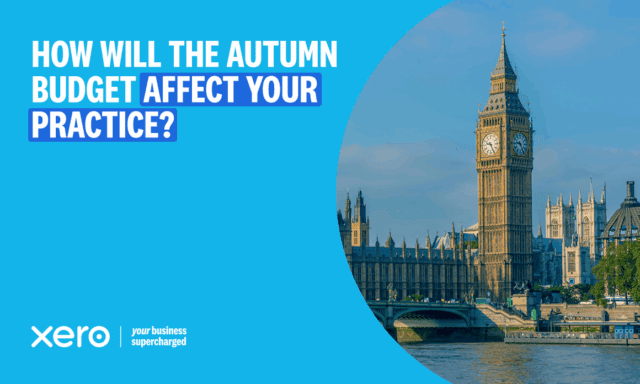
Confidence will be key to the success of this Budget
Last updated: Mar 3, 2024

The challenge set for the Treasurer in this Budget was to deliver a plan to jumpstart the economy out of hibernation, by encouraging jobs, investment and household spending.
This Budget certainly featured many announcements aimed at encouraging hiring, investment and spending. The Government’s task now is to encourage businesses and households to take advantage of the new programs to deliver stronger economic growth and more jobs.
The three pillars of the Budget, that will underpin jobs, investment and household spending are:
- Significant personal income tax cuts (paid early)
- JobMaker Hiring Credit for businesses employing new staff under 35
- Immediate write off for any business assets purchased from 7:30PM last night
Income tax cuts designed to support spending
The centerpiece of the Budget were the personal income tax cuts, including the continuation of the Low and Medium Income Tax Offset, which will flow to more than 11 million taxpayers. The changes are worth an estimated $1,080/year for people earning between $45,000 and $90,000. The benefits increase from there up to a maximum of $2,430/year for people earning more than $120,000. In addition, sole traders will also benefit from the unincorporated tax discount of $1000. Backdating these tax cuts to start on 1 July 2020 is a particularly positive decision and means the extra money will be in bank accounts as soon as the legislation is passed and payroll software is updated.
From an economy-wide perspective, these tax cuts will immediately put extra money in people’s pockets to spend in businesses, including small businesses.
For those people who receive a range of government payments, including aged pension, carer payment and family tax benefit, they will receive two $250 cash payments paid in December and March 2021.
The overall impact of these changes on disposable incomes will depend on what households do with the tax cuts and extra government payments. The extent to which they are saved or used to repay debt will diminish the impact on the economy. In short, the tax cuts need to be spent if they are to help create jobs and boost growth.
Turning now to business-related policies, there were a number of announcements.
Job creation announcements:
- JobMaker Hiring Credit – a 12-month wage subsidy for businesses that hire 16 to 35 year olds for at least 20 hours per week, who were on JobSeeker. It will be a $200/week subsidy for those under 30 and $100/week for those aged 30-35. It’s expected that employers will report JobMaker Hiring Credits using Single Touch Payroll. More details to follow.
- Apprentice wage subsidy scheme – businesses that hire new apprentices will be eligible for a 50% wage subsidy. The $1.2 billion scheme will support 100,000 apprentices and be available to businesses of all sizes.
Business investment announcements:
- Extension of the Instant Asset Write-Off – An extension of this program out to June 2022 to allow businesses to immediately depreciate eligible assets, with no cap on the value of these assets. This not only directly benefits small businesses that invest but some of these assets will be purchased from or serviced by other small businesses.
- R&D tax incentive changes – For small companies (annual turnover of less than $20 million) the refundable R&D tax offset will be set at 18.5 percentage points above the claimant’s company tax rate and there will be no cap on annual cash refunds.
- Loss carry-back provisions – Companies will be able to offset losses incurred to June 2022 against prior profits made in or after the 2018?19 financial year.
Digital adoption announcements :
- JobMaker Digital Business Plan – $800m for a series of measures to help Australia become a leading digital economy by 2030 and to improve productivity, income growth and jobs by supporting the adoption of digital technologies by Australian businesses.
- Cyber security program – $1.7B to improve cyber security within government agencies and increase the confidence of small businesses to engage in the digital economy.
These digital-enablement programs, which will help business owners run their operations more efficiently, will play a critical role in facilitating the take-up of the other new jobs and investment programs.
As with the tax cuts, the key to the success of these business-based programs is that they are used. Businesses will need to have the confidence to take on new staff and buy new equipment if the economy is to feel the full benefit of these programs.
Infrastructure projects get a boost
The Budget isn’t leaving all the responsibility of economic recovery to businesses and households, there was also an additional $7.5 billion spending for new national-level infrastructure projects. This funding is in addition to the $100 billion infrastructure fund (over ten years) announced in previous Budgets. In addition, $3.5 billion has been allocated for upgrades to the NBN roll-out to deliver more Fibre to the Premises connections.
Small businesses are also likely to benefit from the additional $1 billion for the Local Roads and Community Infrastructure program. This is for smaller, local projects to help councils to deliver immediate upgrades of local roads, footpaths and street lighting.
For small businesses to benefit from infrastructure projects, three things need to happen. Firstly, small businesses need to be sub-contractors for these projects. Secondly, the government must enforce the requirement that its payment terms are also reflected through to subcontractors. Finally, the government must mandate the use of e-invoicing to simplify and speed up payments through supply chains.
Budget success depends on confidence to spend and invest
The success of this Budget in rebooting the economy largely depends on the public response. Households will need to be confident enough to spend the tax cuts and businesses will need to be willing to invest in their future and hire new staff. If the tax cuts sit in bank accounts, business hiring and investment programs go unused and infrastructure projects are delayed then the economic recovery is less likely to eventuate.
As a result, the Federal Government will need to remain vigilant, and be prepared to make future policy adjustments, if businesses and households do not respond to this plan for recovery.




